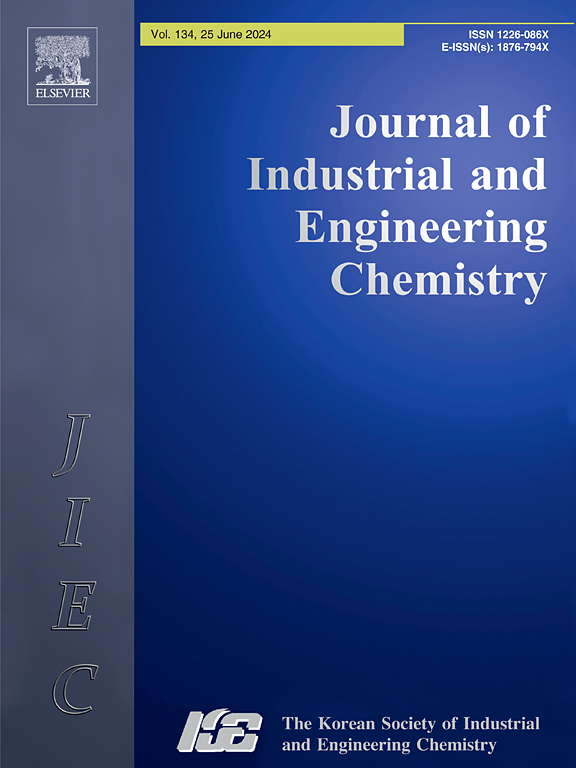改良水处理残渣可作为一种吸附剂,用于去除水中的重金属:综述
IF 5.9
3区 工程技术
Q1 CHEMISTRY, MULTIDISCIPLINARY
Journal of Industrial and Engineering Chemistry
Pub Date : 2024-11-26
DOI:10.1016/j.jiec.2024.11.048
引用次数: 0
摘要
水体重金属污染一直是全球关注的环境问题。在饮用水处理过程中产生的水处理残留物(WTR)已被证明是一种具有潜在成本效益的重金属吸附剂。然而,原水tr由于其自身的缺陷,制约了其应用。本综述旨在总结WTR改性的代表性研究,阐明各种改性方法对WTR理化性质的影响,这在以往的综述文章中是罕见的。此外,还讨论了影响WTR吸附的因素以及重金属之间的竞争吸附。主要结果表明,热处理、酸活化和复合材料的开发等方法已经成功地应用于WTR的改性,表明通过改变WTR的性能来优化其吸附的重要性。WTR的吸附能力受多种因素调节,对重金属的竞争吸附能力与离子半径和电负性成正比。研究多金属共存条件下的吸附对水tr在实际水生环境中的应用至关重要。本文旨在为重金属污染的治理和污水处理的优化利用,促进全球可持续发展提供有价值的信息。本文章由计算机程序翻译,如有差异,请以英文原文为准。

Modified water treatment residual serves as an adsorbent for the removal of heavy metals from water: A review
Heavy metal pollution in water has always been an environmental issue of global concern. Water treatment residual (WTR), generated during drinking water treatment processes, has proven to be a potentially cost-effective adsorbent for heavy metals. However, the application of raw WTR is restricted due to its defects. The purpose of this review is to summarize representative research on modified WTR, elucidating the impact of various modification methods on the physicochemical properties of WTR, which is rare in previous review articles. Furthermore, the review discusses the factors influencing the adsorption of WTR and the competitive adsorption among heavy metals. The main results indicate that methods such as heat treatment, acid activation, and development of composites have been successfully applied in modifying WTR, demonstrating the importance of optimizing the adsorption of WTR by altering its properties. The adsorption capacity of WTR is regulated by multiple factors, and the competitive adsorption capacity of heavy metals is proportional to ionic radius and electronegativity. Studying adsorption under conditions of multi-metal coexistence is crucial for the application of WTR in real aquatic environments. This review aims to provide valuable information for remediating heavy metal pollution and optimizing the utilization of WTR to promote global sustainable development.
求助全文
通过发布文献求助,成功后即可免费获取论文全文。
去求助
来源期刊
CiteScore
10.40
自引率
6.60%
发文量
639
审稿时长
29 days
期刊介绍:
Journal of Industrial and Engineering Chemistry is published monthly in English by the Korean Society of Industrial and Engineering Chemistry. JIEC brings together multidisciplinary interests in one journal and is to disseminate information on all aspects of research and development in industrial and engineering chemistry. Contributions in the form of research articles, short communications, notes and reviews are considered for publication. The editors welcome original contributions that have not been and are not to be published elsewhere. Instruction to authors and a manuscript submissions form are printed at the end of each issue. Bulk reprints of individual articles can be ordered. This publication is partially supported by Korea Research Foundation and the Korean Federation of Science and Technology Societies.

 求助内容:
求助内容: 应助结果提醒方式:
应助结果提醒方式:


